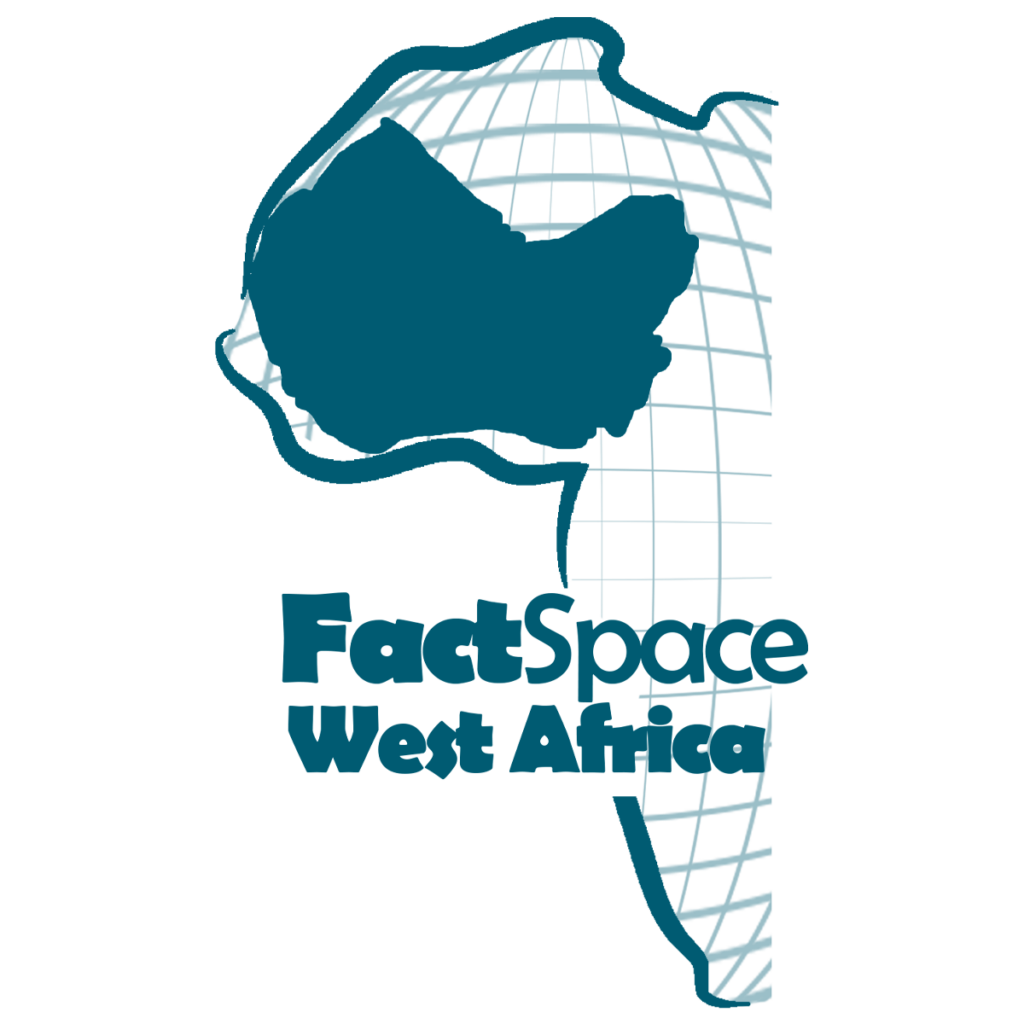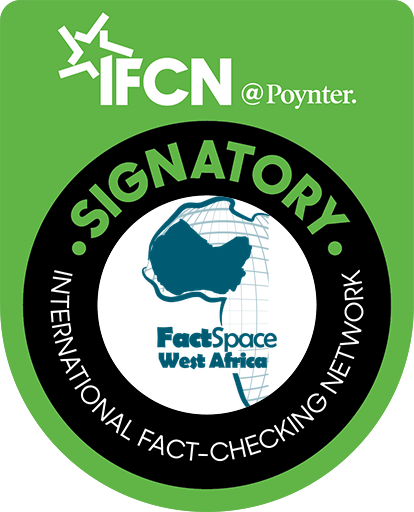FactSpace W/A, Accra 11.09.2024 – FactSpace West Africa (W/A), in collaboration with UNICEF and the Ghana Health Service (GHS), hosted a webinar to strengthen the capacity of journalists and other stakeholders in combating health misinformation.
The webinar focused on equipping the close to sixty (60) participants with Human-Centered Design (HCD) skills to effectively track and counteract misinformation, particularly on social media.
In her opening remarks, Bridget Annim, Deputy Director of the Health Promotion Division (HPD) of the GHS, emphasized that the digital age has amplified the spread of health misinformation. She highlighted that social media and other platforms often disseminate inaccurate information more rapidly than verified updates, leading to serious consequences such as erosion of trust, public health risks, strained resources, and even social unrest.
“To effectively combat misinformation, integrated social listening is essential,” Annim stressed. “This involves monitoring social media and other communication channels to detect and address misinformation in real time.”
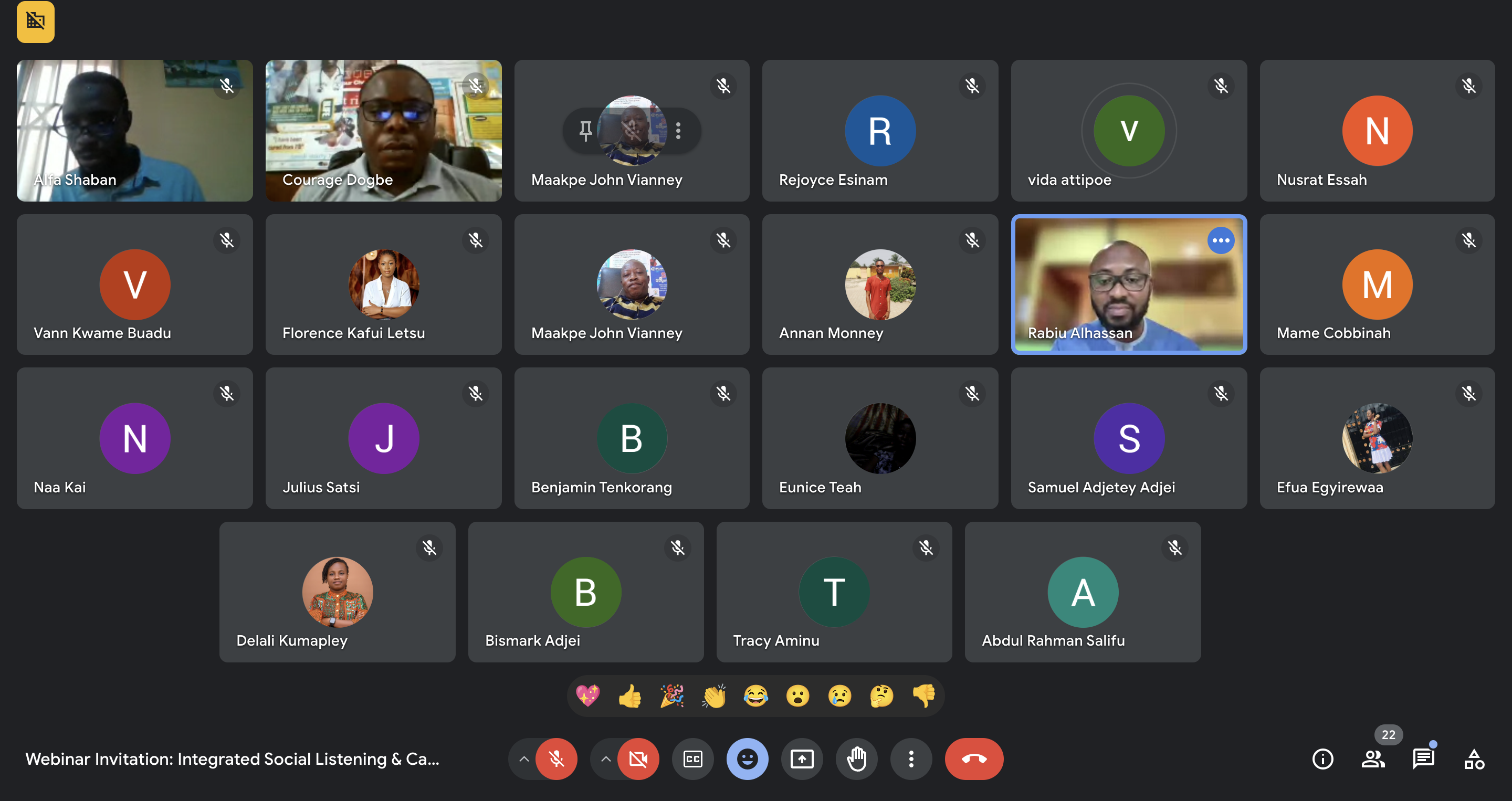
Rabiu Alhassan, Director of FactSpace W/A, underscored the importance of verifying health-related claims, noting that misinformation in this area can have devastating effects on public health.
GHS-HPD Senior Officer Joel Abekuliya conducted training on tools for monitoring and analyzing misinformation, explaining that Ghana has a robust system for monitoring rumors, in line with the new International Health Regulations (IHR). Joel outlined the three key steps in rumor management: listening and monitoring, verifying content, and engaging with accurate responses.
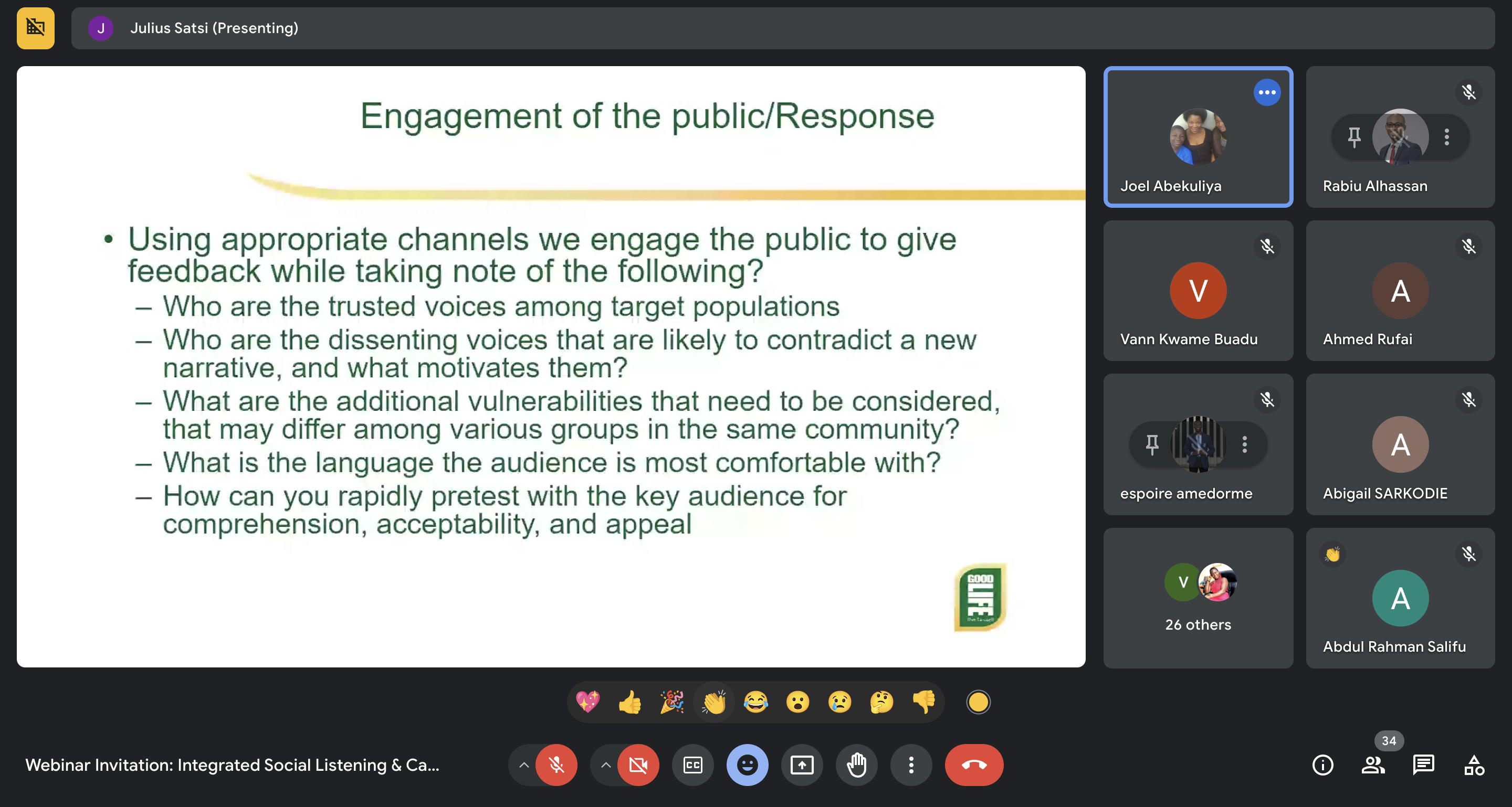
Joel further elaborated on the two stages of the listening and monitoring process: tracking rumors from various media and communities and documenting them. He mentioned that the GHS-HPD employs manual monitoring through radio, TV, and newspapers, collects community feedback via Kobo Collect, and tracks digital media (including social media posts) using platforms like Talkwalker, Meltwater, and Brand 24.
FactSpace W/A Sub-Editor Gifty Tracy Aminu provided insights into different forms of misinformation during her presentation on fact-checking. She explained that disinformation refers to manipulated or fabricated information deliberately spread to influence public opinion or obscure the truth with harmful intent. Misinformation, on the other hand, is false or misleading information shared without any intent to harm, while mal-information involves genuine information being shared to cause harm, often by leaking private information into the public sphere.
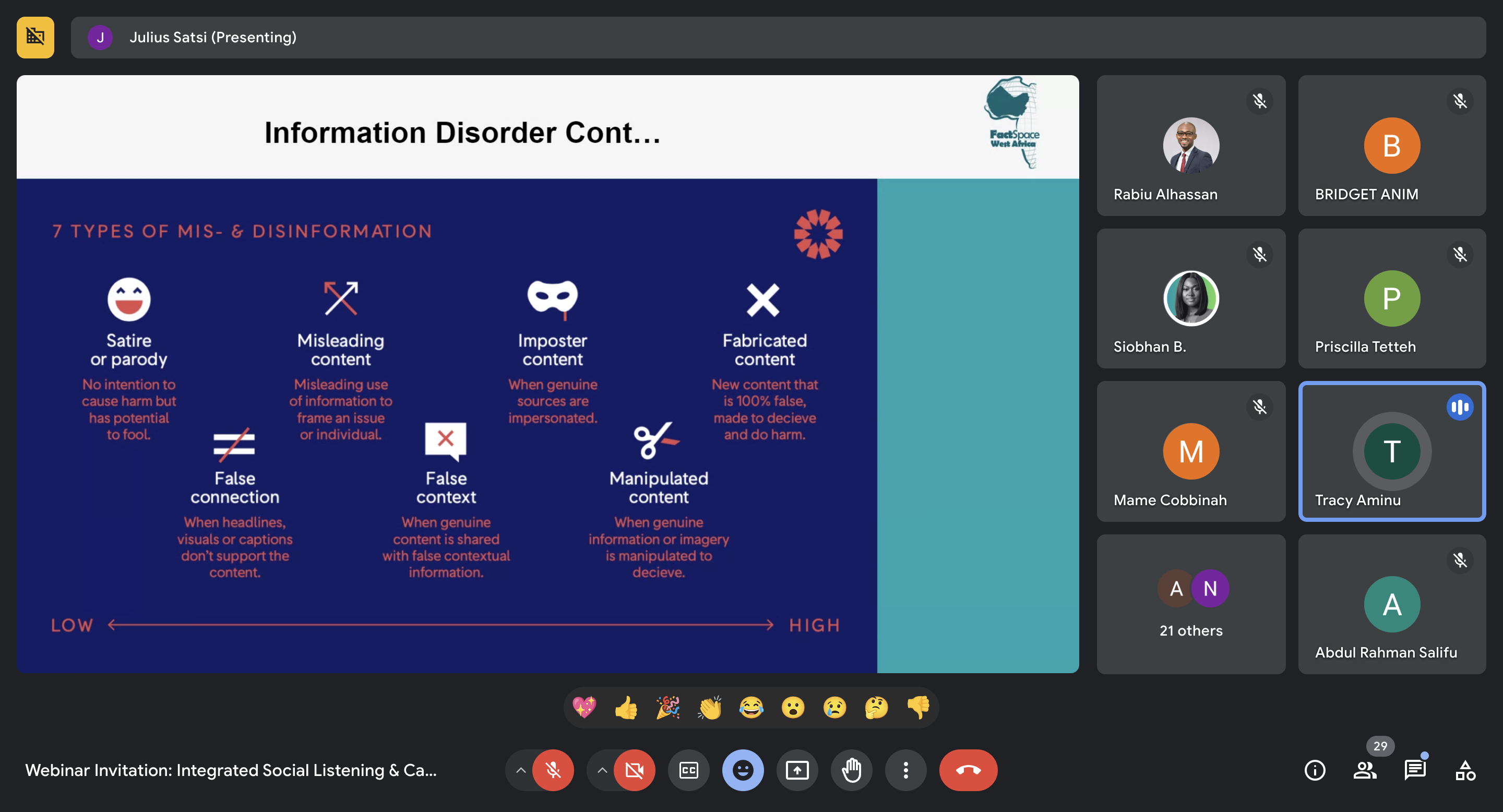
Tracy also introduced participants to key digital tools used to combat information disorder, such as Reverse Image Search, TinEye, InViD Verification Tools, Yandex, and Google Lens.
UNICEF Ghana’s Technology for Development Officer, Siobhan Burnette, guided participants through the principles of Human-Centered Design (HCD) for effective messaging in public health. She described HCD as a creative problem-solving approach that begins with understanding people and working towards creating solutions. Burnette noted that this approach draws from behavioral sciences and design thinking.

“A design mindset is characterized by curiosity, accepting uncertainty, embracing failure, starting small, and being flexible,” Siobhan explained. She stressed the importance of keeping people at the center of the process, planning and problem-solving with a systems view, and ensuring that research is quick, interactive, personal, and action-oriented.
Burnette concluded by advising that solutions must align with users’ habits and motivations and undergo continuous testing, learning, adjusting, and retesting.
By Julius Kofi Satsi
